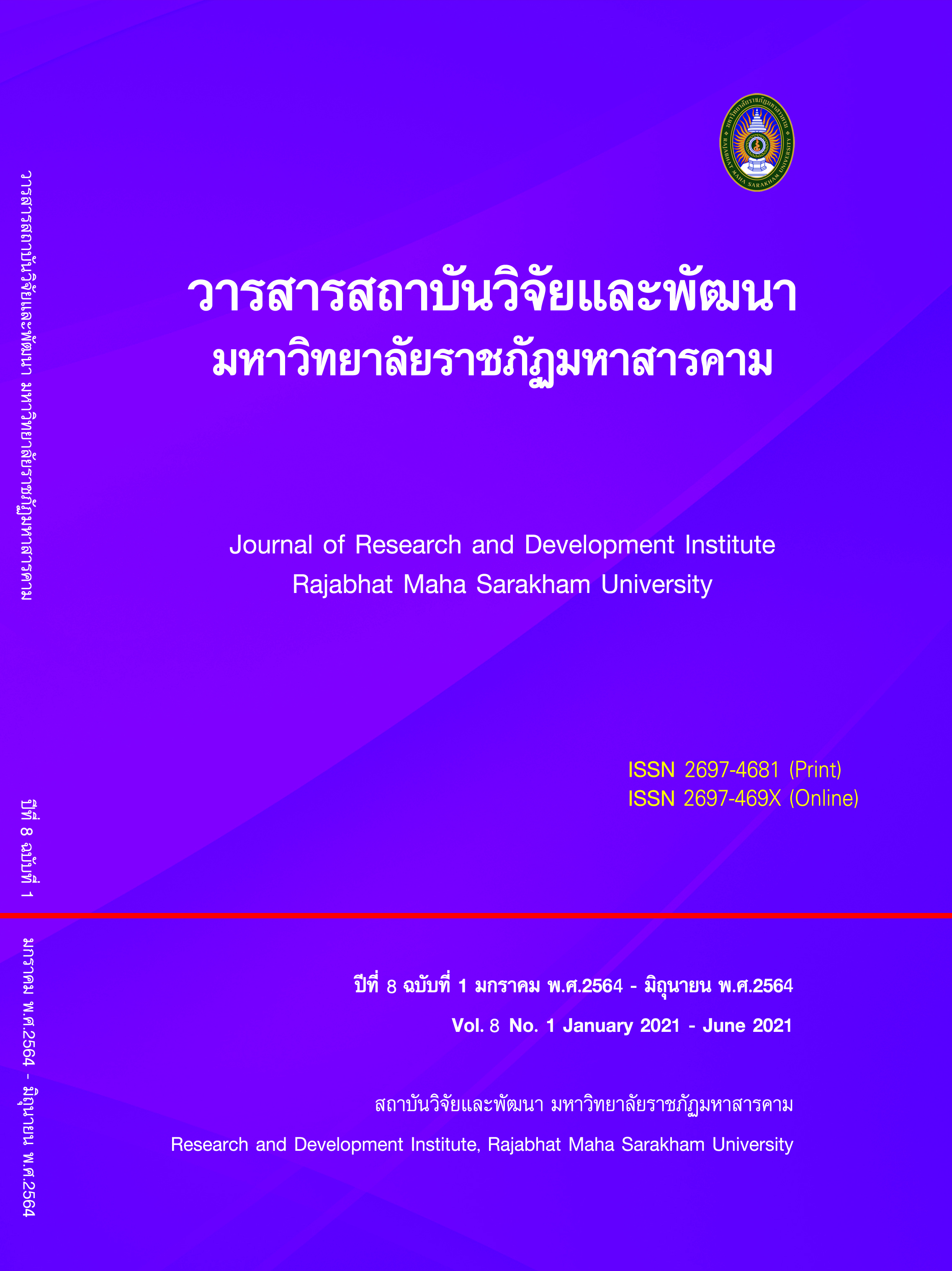Guidelines for the development of information technology use for school administration under the Roi Et Primary Education Service Area Office 2
Keywords:
Information technology, Education administration, Development approachAbstract
The research aims to 1) study the level of use of information technology for administration 2) study the development of information technology for the administration of educational institutions. The research was divided into 2 phases. Phase 1 studied the level of information technology use from the sample group. Was 364 educational personnel. The tool was a questionnaire. Tool quality The consistency index value 0.67 - 1.00, the classification power between 0.29-0.83 and the confidence value 0.97. From the target group of 8 people, the tool was an interview form.
The results of the research were as follows: 1) The level of information technology used for the administration of educational institutions. The overall and individual aspects are at a high level. 2) The development approach for the use of information technology for management is that administrators should be a model in applying information technology. Bring information technology to learners and personnel in educational institutions To develop educational systems, administrators should study and give importance to the application of information technology to educational institutions. Create a curriculum that covers content and brings information technology materials to be integrated in teaching and learning management and to connect effective networks. Director of the Office of the Educational Service Area or the administrator of the educational institution organizes training on the use of information technology at least once a year, the school administrators prepare information for decision making. Executives should seek cooperation from all parties to provide operational budgets. And should use information technology in a flexible way Can be integrated to provide services anywhere, anytime.
References
Boonprasert, U. (2013). Information technology related to educational administration. [Online]. http://knirun1.blogspot.com/2013/04/blog-post_26.html. [3 May 2020]
Boonsinprom, C. (2014). The condition of using information technology for the administration of high-level educational institutions Phochai District Fundamentals Under the Office of Roi Et Primary Education Area 3. Master’s Thesis: Northeastern University.
Center for the Development of Educational Quality through Distance Education Technology. (2016). Guidelines for improving the quality of distance education through information technology (DLIT). Bangkok: Thai alphabet.
Education Council Secretariat. (2018). State of Thai education in 2016/2017, guidelines for reforming Thai education to step into the Thailand 4.0 era. Bangkok: Prik Wan Graphic Co., Ltd.
Homrak, C. (2014). Conditions and problems of using information technology for school administration to expand educational opportunities under the Surat Thani Primary Educational Service Area Office 3. Narkshut paritat journal. 6(2), 52-62.
Information and Communication Technology Center. (2004 ). Information and Communication Technology Master Plan for Education, Ministry of Education 2004-2006. [Online]. http://www.moe.go.th. [2 May 2020]
Juthawiphas, W. (1998). art exhibition. Bangkok: Chulalongkorn University.
Kwandaeng, S. (2017). Problems in the use of information technology in the administration of educational institutes under Hat Yai Municipality Songkhla Province. Master’s Thesis: Hat Yai University.
National Education Act. (1999). Government Gazette. Volume 116, chapter 74 g., pages 1-23.
Nilsuk, P. (2008). Documents for teaching computer for education. Bangkok: King Mongkut's University of Technology North Bangkok.
Nonthaphat, T. (2015). Use of Information Technology for Administration of Educational Institutions in the Office of Nakhon Ratchasima Primary Educational Service Area 3. Master’s Thesis: Nakhon Si Thammarat Rajabhat University.
Pangsorn, S. (2013). Problem conditions and development guidelines for the use of information technology for school administration Under the Office of Nakhon Ratchasima Primary Educational Service Area District 4. Master’s Thesis: Maha sarakham University.
Srisa-ard, S. (2013). preliminary research. (9nded). Bangkok: Suwiriyasan Co., Ltd.
Worakham, P. (2013). Educational Research. (6nded). Maha Sarakham: Taksila printing.
Worakitkasemsakul, S. (2011). Research methods in behavioral and social sciences. [Online] http://www.udru.ac.th/oldsite/attachments/elearning/01/07.pdf. [4 May 2020]
Worakitkasemsakul, S. (2011). Research methods in behavioral and social sciences. [Online] http://www.udru.ac.th/oldsite/attachments/elearning/01/07.pdf. [3 May 2020]
Yamane. (1967). Taro Statistic: An Introductory Analysis.New York: Harper &row.
Downloads
Published
How to Cite
Issue
Section
License
Copyright (c) 2021 Journal of Research and Development Institute Rajabhat Maha Sarakham University

This work is licensed under a Creative Commons Attribution-NonCommercial-NoDerivatives 4.0 International License.
Articles that are published are copyrighted by the authors of the articles







